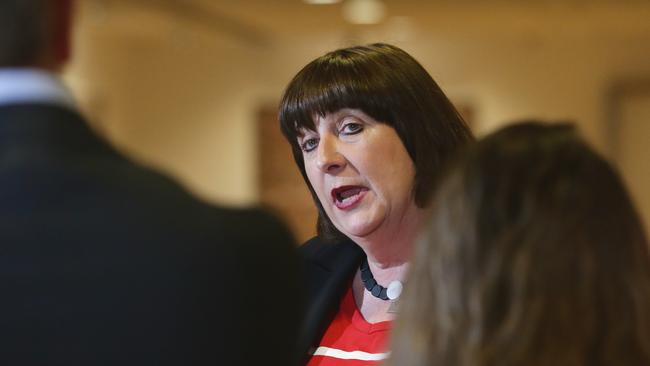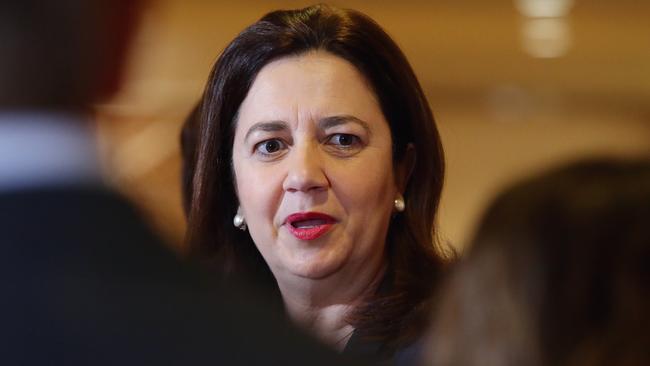State’s legislated nurse to patient ratios have saved lives and millions of dollars — report
The first ever evaluation of nurse-to-patient ratios in the world has been focused on Queensland’s legislated staffing ratios and reveals that 145 lives and up to $81m taxpayer dollars have been saved since the laws were introduced in the state in 2016.

QLD News
Don't miss out on the headlines from QLD News. Followed categories will be added to My News.
THE first ever evaluation of nurse-to-patient ratios in the world has been focused on Queensland’s legislated staffing ratios and reveals that 145 lives and up to $81m taxpayer dollars have been saved since the laws were introduced in the state in 2016.
The Courier-Mail can exclusively reveal that the research carried out by Queensland University of Technology and the University of Pennsylvania (UPenn) in partnership with Queensland Health hails the ratio laws a success and flags the benefits of staffing ratio laws in aged care facilities.
The Queensland government introduced minimum nurse-to-patient staffing in 27 prescribed publics hospitals in July 2016.
MILES PUTS AN END TO DECADES OF BIRTHING UNIT CLOSURES
STATE GOVERNMENT BRINGS IN CONSULTANTS TO FIX QUEENSLAND HEALTH IT BUNGLE
MINISTER PULLING OUT ALL STOPS IN BIGGEST HEALTHCARE CHALLENGE
The ratios legislated for one nurse to four patients on a day/evening shift and one nurse to seven patients on a night shift.

Since then, the research estimates 145 lives have been saved, 255 readmissions avoided at a cost saving of $1.2 to $2.4m and 29,200 hospital days avoided, saving $54-$81m.
The Queensland findings of the ratios’ roll out are “phenomenal” says Queensland Nurses and Midwives’ Union (QNMU) Secretary Beth Mohle.
“Ratios have seen 255 readmissions from conditions such as infections avoided. Avoiding these readmissions has saved the public health system more than 29,200 hospital days or between $54 and $81 million taxpayer dollars,” she said.
Ms Mohle says the union would continue to campaign for the wider roll out of ratios in the public sector, private aged care facilities and private hospitals.
“Today we celebrate Premier Annastacia Palaszczuk’s courageous decision to introduce nurse to patient ratios in Queensland,” Ms Mohle said.

The study reveals that on average a medical-surgical nurse saw a workload reduction of one to three patients. Even after accounting for patient demographics, health condition and severity of illness, hospital size and location and other changes over time, a reduction of one patient per nurse was associated with nine per cent less chance of patient dying in hospital, seven per cent lower odds of readmission within seven days, three per cent reduction in length of stay and seven per cent reduction in nurse burnout.
The study design involved data collection from thousands of Queensland nurses representing all public hospitals via surveys before and after the legislation took effect. The survey data was linked with administrative data from hospitals and objective, independent data on outcomes for hundreds of thousands of Queensland patients to determine whether improving nurse staffing led to better outcomes.


